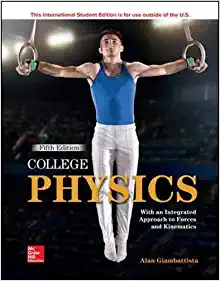A parallel-plate capacitor consists of two flat metal plates of area A separated by a small distance
Question:
A parallel-plate capacitor consists of two flat metal plates of area A separated by a small distance d. The plates are given equal and opposite net charges ±q.
(a) Sketch the field lines and use your sketch to explain why almost all of the charge is on the inner surfaces of the plates.
(b) Use Gauss’s law to show that the electric field between the plates and away from the edges is E = q/(ϵ0A) = σ/ϵ0.
(c) Does this agree with or contradict the result of Problem 79? Explain.
(d) Use the principle of superposition and the result of Problem 78 to arrive at this same answer.
Data From Problem 78
A parallel plate capacitor has a charge of 5.5 × 10−7 C on one plate and −5.5 × 10−7 C on the other. The distance between the plates is increased by 50% while the charge on each plate stays the same. What happens to the energy stored in the capacitor?
Step by Step Answer:

College Physics With An Integrated Approach To Forces And Kinematics
ISBN: 978-1260547719
5th Edition
Authors: Alan Giambattista





